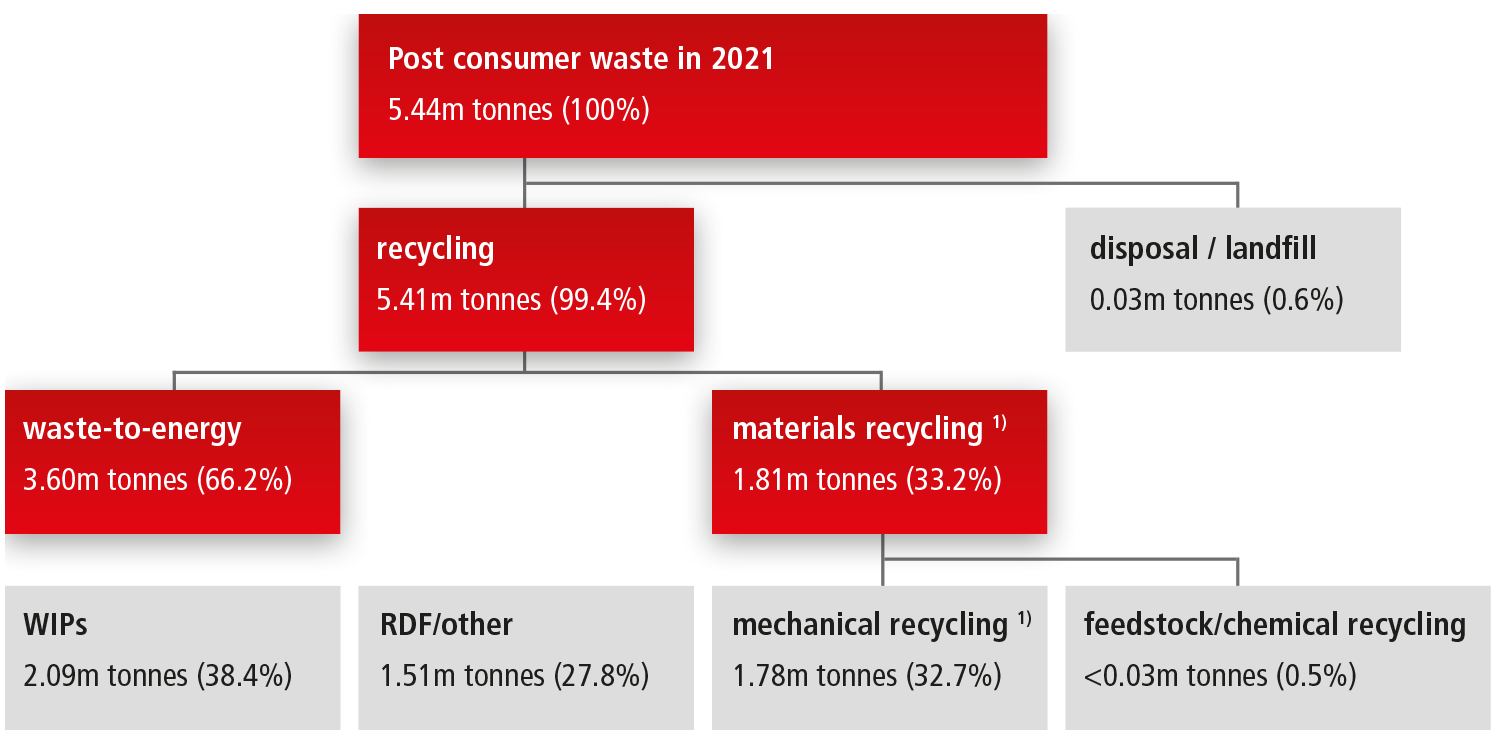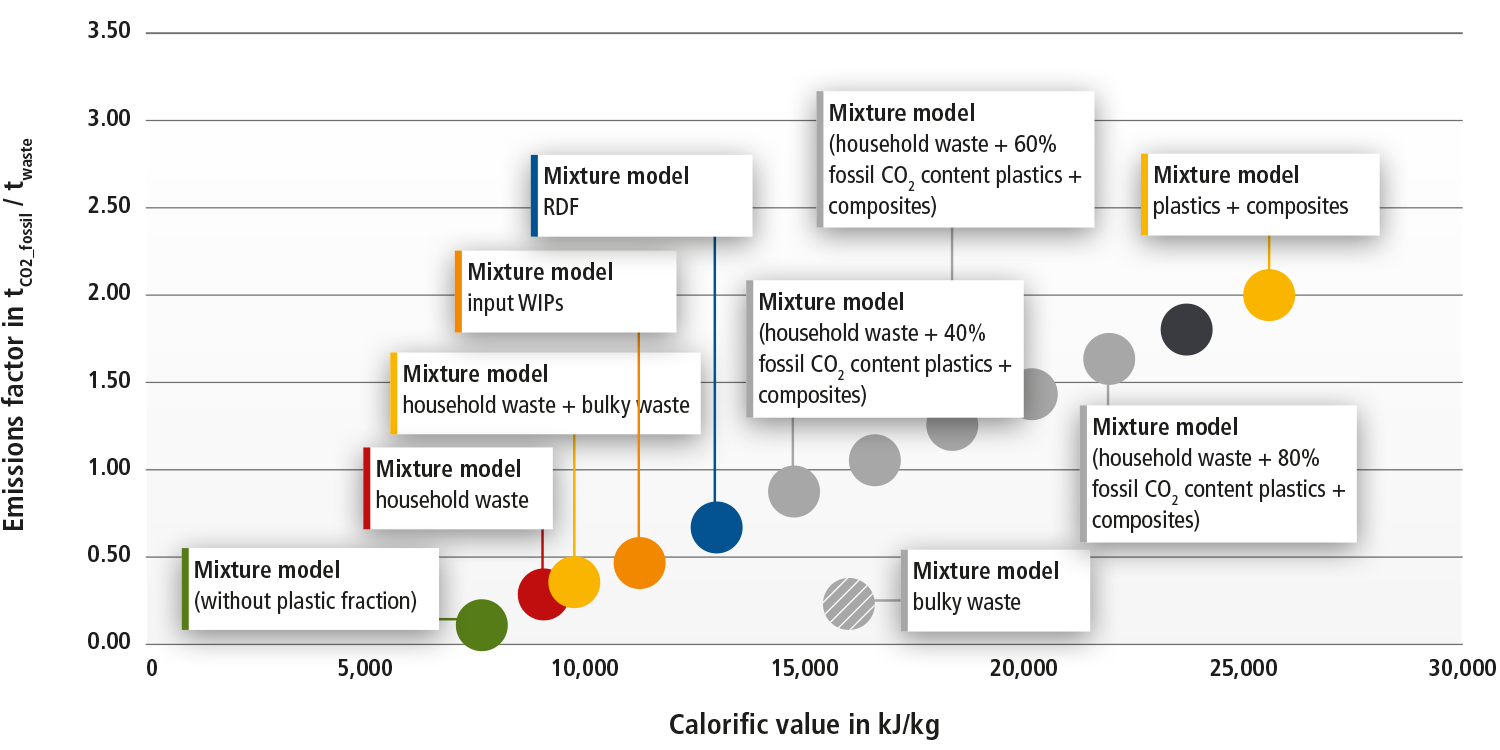Just imagine this: a whole continent wants to stop incinerating fossil raw materials to prevent climate change. But, at the same time, products made of fossil raw materials, in particular plastics, should continue to be incinerated indefinitely without there being any consequences whatsoever. So what do you think would happen? Exactly. Even more plastics would be incinerated to supposedly ‘decarbonise heat supplies’ instead of being sent for high quality recycling and returned to market for reuse. And then, as the icing on the greenwashing cake, incinerating plastics would even be passed off as a climate action measure.
It really isn’t rocket science to see how these are connected. Which is why it is so important to put a price on the fossil CO2 emissions generated by waste incineration. This price, however, must be valid across Europe to guarantee fair competition. The EU’s Emissions Trading System is a very efficient tool as it acts as a regulation that can help ensure the energy transition is implemented without thwarting the transition towards a circular economy. The EU’S ETS is the missing link between the energy transition and the raw materials transition.
And yet EU institutions are finding it difficult to send out a clear signal regarding this particular issue. In the middle of April, the European Parliament formally agreed to the ‘soft’ trilogue compromise reached in December, in which waste incineration may perhaps be included in the ETS from 2028 onwards – after it has been reviewed again by the Commission. A lot of questions, very few answers: the decisions that recyclers, industry and operators of waste incineration plants (WIPs) will have to make as to whether or not to invest billions of euros in this transformation process are being unnecessarily delayed by Brussels ‘walking on eggshells’ approach. And yet we’re running out of time to stop climate change.
Plastics recycling today: produce, consume, discard
Despite all the recent successes, the plastics supply chain is still – for the most part – a conventional linear sector, operating in line with the principle: produce, consume, discard.
According to a recent Conversio study, the German plastics industry processed almost exactly 14 million tonnes of plastic in 2021. Almost 84% of this – around 11.8 million tonnes – was based on fossil raw materials. A mere 16% of plastic products (or 2.3 million tonnes) were based on recycled plastic or reused by-products.
5.7 million tonnes of plastics were discarded in the same year, including 3.2 million tonnes of plastic packaging, which is generally used for just a very short period of time. Just one third of this plastic waste (or 1.8 million tonnes) was recycled for reuse in 2021, while 3.6 million tonnes – i.e. two thirds of all waste plastics – were incinerated; 2.1 million tonnes of which, according to Conversio, were incinerated in waste incineration plants.

How plastics were processed in 2021 (source: Conversio)
Incinerating our plastic waste is, therefore, no different to using fossil fuels – just via a more circuitous route. If there is no clear price signal impacting the supply chain, then very little will change. On the contrary: with energy markets coming under pressure, there is a danger that more plastics will be sent for incineration rather than fewer.

In other words: the production of plastics is still, for the most part, based on fossil raw materials and we get rid of the majority of our unwanted plastics by incinerating them.

Disposal routes taken by post consumer plastic waste in 2021 (source: Conversio)
Incinerating plastics has a huge impact on the climate
According to a study published by the Federal government, 87% of the fossil CO2 emissions generated by waste incineration plants are caused by plastics. The reason for this is because plastics have such a high carbon content. When plastics are incinerated, their carbon (C) content reacts with oxygen (O2) and produces carbon dioxide (CO2). Normally, one tonne of mixed waste generates around one tonne of CO2. Incinerating plastics, however, generates two tonnes of CO2 per tonne – i.e. twice the amount. And this figure can be even higher with some types of plastic fractions. Up to 2.5 tonnes of CO2 are possible per tonne of plastic.

Level of fossil CO2 emissions in certain types of waste fractions (source: Enverum, et al.)
Which means that the 2.09 million tonnes of post consumer plastics, which were – according to Conversio – incinerated in waste incineration plants in Germany in 2021, caused at least 4.18 million tonnes of CO2. Statistics published by the European Parliament reveal that around 26 million tonnes of plastic waste are generated in the EU every year. According to official figures, 42.6% of these materials are incinerated. That is around 11 million tonnes of plastic that cause at least 22 million tonnes of CO2 when they are burned.
This not only has a negative impact on the climate. The EU is choosing to forgo the proceeds it could get from selling emission allowances – proceeds that could be passed on to member states to help them with their green transformation. At the moment the market price for EU emission allowances (EUA) lies at around 90 euros per tonne. By not charging for the 22 million tonnes of CO2 caused by the incineration of plastics each year, the EU is forgoing proceeds of around two billion euros (current EUA price).
The EU Emission Trading System: a game changer for the circular economy
Looking at the circular economy, the key factor that determines which route a waste stream takes is price. The ETS has, therefore, the potential to be a genuine game changer for the circular economy and to unleash major transformation processes that could help to not only drive forward the materials recycling of plastics but also to lead to the creation of new business models along the whole of the supply chain.
To start with, an EUA price of 90 euros would increase the cost of incinerating plastics by around 180 euros per tonne. This cost increase is so big that the operators of waste incineration plants would be forced to pass these costs on to their suppliers if they continued to insist on having their plastic waste incinerated. As a result, thermal treatment prices would differ according to fossil carbon emissions. New measurement and analysis methods could make such a pricing system possible.
WIP operators could provide their customers with an alternative service: depending on the prices on the EUA market, they could offer to sort the mixtures of waste delivered to their plant and to send the plastic fractions on – as far as this is possible – to other facilities for materials or chemical recycling. This type of carbon capture and recycling could also lead to the creation of new climate-friendly business models that would not be possible if the sector is not included in the ETS.
The suppliers would, in turn, pass on these additional costs to their own customers, which would give them a greater incentive to separate their waste according to type and have it sent for materials recycling whenever possible. Separating their waste streams and having them recycled would not only be the most environmentally, climate and resource-friendly treatment method, it would also be the most financially viable.
As far as the manufacturers are concerned (especially manufacturers of short use plastic products such as packaging), such a scheme would make it much more interesting for them to use fully recyclable packaging as their customers further down the supply chain would otherwise have to pay high waste disposal costs.
Why the BEHG is not the right alternative
This carbon price, however, can only have a positive impact if it is implemented as part of the ETS. This scheme alone can guarantee uniform allowance prices across the whole of Europe and ensure that operators of incineration plants in Europe are subject to the same conditions. The amendment to the Federal Fuel Emission Allowance Trading Act [BEHG] – which will see a national allowance trading scheme being introduced in Germany for thermal waste treatment in 2024 – is not a sensible alternative. On the contrary: while the Government’s decision to act unilaterally will mean that waste incineration will become more expensive in Germany, it will not lead to more plastics being collected, sorted and recycled separately. Instead the BEHG will encourage companies to process mixed waste as little as possible and then export it as “refuse-derived fuel” to waste incineration plants in other European countries where climate-damaging emissions are permitted and carbon prices are not charged.
Worst case scenario: the BEHG encourages businesses to exploit the ever widening differences in prices in Europe and dump the waste illegally somewhere in Europe. Instead of promoting a sustainable, high quality circular economy, it will see waste being exported to wherever the disposal costs are the cheapest.
The energy transition and the raw materials transition are two sides of the same coin. And we need both of them to tackle climate change. We must take note of how one impacts on the other so that they don’t end up hampering one another. The European Trading System is the missing link to tying the energy transition in with a sustainable plastics circular economy.
Image credits: image 1: Adobe Stock: rdnzl; image 2: Adobe Stock: gavran333












